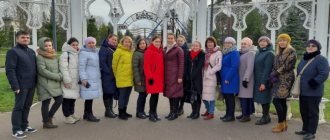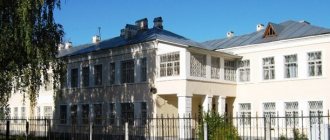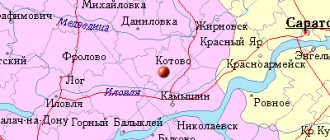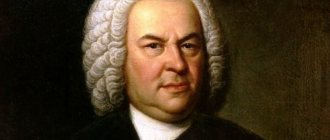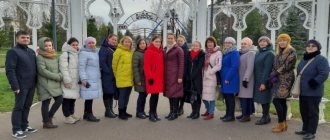A small merchant town on the banks of the Kama is the geographical center of Tatarstan.
The first mentions of the village of Chistoe Polye appear in chronicles at the end of the 17th - beginning of the 18th century. There is a version that the first settlers were runaway peasants or schismatics who created a free settlement, which was burned, and in its place an open field was left. The village was revived, and received its name in memory of the great fire.
By the end of the 19th - beginning of the 20th centuries, Chistopol was a large merchant city, a center of grain trade. During the Great Patriotic War, it became a shelter for more than 200 members of the Union of Soviet Writers. Nobel Prize winner Boris Pasternak began writing the novel Doctor Zhivago here.
Today Chistopol has retained the atmosphere of the district merchant towns. Even the natives discover something new every day while walking along the quiet, cobblestone streets of a provincial Russian town. A special atmosphere is created by ancient merchant houses with ornate lanterns and openwork balconies.
In 2014, the Chistopol State Historical, Architectural and Literary Museum-Reserve .
How to get there from Kazan: by bus Kazan-Chistopol from the Central bus station. Travel time is 2.5-3 hours. You can get to Chistopol by traveling by boat along the Kama. Website: chisto-muzei.ru
St. Nicholas Cathedral
Address: K. Marksa, 2 Phone: +7 (24342) 5-42-50, +7 (24342) 5-42-60, +7 (24342) 5-00-73
The cathedral stands on the high bank of the Kama directly above the river and is one of the best church buildings of the first half of the 19th century on the territory of Tatarstan. The author of the project is Pavel Pyatnitsky, an architect who forever glorified his name with the construction of the main building of the Kazan Imperial University.
The complex consists of a temple, a gatehouse, a chapel, extensive arched gates and a metal fence. The cathedral building is a five-domed centric temple with three four-column porticoes of the Ionic order. On the east side of the façade there is an extension of the altar. And on the opposite side there is a bell tower. The facades are designed in the style of classicism. The complex is complemented by a square chapel in pseudo-Russian style.
The three-altar stone St. Nicholas Cathedral was built in 1838 with the money of the Polyakov merchants. A whole constellation of names, besides Pavel Pyatnitsky, is associated with the history of its construction: Thomas Petondi, Mikhail Tyufilin, Vladimir Pomerantsev, Vsevolod Poshekhonov. During the years of Soviet power, the cathedral was closed several times. During the war, Boris Pasternak and Arseny Tarkovsky, evacuated to Chistopol, admired the silhouette of the cathedral. In 1990, one of the first in the diocese, the St. Nicholas Church of Chistopol was returned to the Church.
How to get there?
Excursion from Kazan
There are no direct routes to the city from Moscow. You can come by train or fly by plane to Kazan or Nizhnekamsk. From here you can take a bus to Chistopol. The distance between settlements is 110 kilometers. You can also use the services of cruise ships. Due to the inconvenient geographical location, many people prefer to book excursions here. This option is also beneficial because the trip becomes more organized.
The lands were considered state-owned. The government was wary that the territory had been seized without permission. For a long time, people turned a blind eye to this situation. But ultimately, the tsarist troops arrived here and burned the village. An empty field also formed in place. However, the land was empty for long. Soon new residents arrived here. This time it was the sovereign's peasants. The settlement was rebuilt. Among the residents there were many former fugitives who managed to avoid exile. By the mid-18th century, the village had expanded significantly. Residents mainly specialized in trade. By 1761 the population exceeded a thousand people. Twenty years later it was given the status of a district town called Chistopol. In 1781, a coat of arms appeared.
Over time, the settlement grew and developed. The modern city carefully protects its historical roots. However, the empty bread square still remains, reminiscent of the events of the past.
Since the city was a district city, it had to have a representative Orthodox cathedral. A temple in the name of St. Nicholas of Myra appeared on the territory of the settlement. It was built in the spirit of Russian classicism and required considerable investments and efforts for construction. Construction was financed by merchants.
Chistopol occupied a leading position in the sale of bread. The grain was sent to many localities in Russia and abroad. The leading merchant dynasties of that period were primarily engaged in trade. By the end of the 19th century, it had already been given the status of a major grain trading center. In 1832, the first engine appeared at the city mill. On the Kama, merchants became owners of river fleets. In the 20th century, a trading exchange was formed. Its charter was approved by Nicholas II himself.
In 1829, a regular building plan appeared. He envisioned the construction of a city on both sides of the Kama River. This scheme was considered traditional for the Volga region. Before the October Revolution it was a prosperous city. In 1914, pounds of bread and grain were sent to the front.
County town museum
Address: K. Marksa, 8 Phone: +7 (84342) 5-11-07, +7 (84342) 5-11-00 Opening hours: Tue-Sat – 09:00-17:00
The museum of the county town in Chistopol is located in an old merchant mansion of the late 19th century, which previously belonged to the Kazan merchant A.A. Poduruev and his wife Maria Ivanovna, nee Stakheeva. The museum building is an architectural monument of the Republic of Tatarstan.
The most interesting exhibits from the old archaeological, paleontological, biological and botanical collections: Bulgar chain mail, found in 1921, a rich collection of remains of ancient animals - mammoths, bison, rhinoceroses and unicorns.
The museum's largest collection of written sources includes documents from the end of the 17th century to the present day, handwritten and early printed books. Among them are “Church Singing Practice”, “Irmos”, “Chanter’s Trelling”, “Lives of the Saints” 1762, “Gospel” 1856 and others.
The museum archive contains letters, pages from diaries, photographs, documents of famous writers who were evacuated in Chistopol during the war. The pearl of the collection are two wooden bicycles. They were made by peasant Nikolai Melnikov: one in 1902, the second seven years later. Story
The museum was founded in 1921 by amateur local historian Alexander Bulich. He had his own collection of antiquities, some of which survive today.
Mosques and temples of the city of Chistopol
Tatarstan is a region where two religions coexist: Islam and Orthodoxy. The appearance of the city successfully combines ancient and modern churches for adherents of both faiths.
The first cathedral mosque "Nur"
- Address: st. Vakhitova, 39.
A wooden religious building in the traditions of national Tatar temple architecture of the 19th century. The mosque is the oldest in Chistopol and is one of the most ancient Islamic temples in all of Tatarstan. It was built in 1854 thanks to the investments of a merchant named Yakupov. The temple continues to regularly welcome adherents of the Islamic faith; throughout history, its activities have never stopped.
Iman Mosque
- Address: st. 40 years of Victory, 11.
The three-story temple, 6.5 meters high, was built in the 1990s and is considered the fourth largest mosque in the territory of the Republic of Tatarstan. Its total area is more than 1300 sq. m. An Islamic educational institution has been organized at the temple - a madrasah, where classes are held daily.
Church of the Kazan Icon of the Mother of God
- Address: st. Karl Marx, 67.
In the old cemetery of Chistopol, a monument of Orthodox culture has been preserved, an example of classicism in church architecture of the 19th century. The Kazan Church is the creation of the architect I.P. Bessonova, was built from 1840 to 1848. In the 1930s Soviet authorities closed the church, its premises were used as a prison. However, the break in spiritual service was short-lived; already in the war of 1943, the church again received parishioners.
Temple "Tenderness"
- Address: st. Lenina, 54K.
The newly-founded Orthodox church in Chistopol opened in 2013 on the occasion of the 1025th anniversary of the baptism of Rus'. It was decided to consecrate the temple in honor of the Tenderness icon. The brick religious building is remarkable for its interior decoration; the walls of the temple are decorated with picturesque paintings and frescoes with the lives of saints. They were created by artists from the Palekhovy Image workshop; a total of 18 specialists worked on the paintings.
Anas Mosque
- Address: st. Michurina, 10B.
With the revival of the religious culture of the peoples of Russia in recent decades, new Muslim churches began to appear in Chistopol. The Anas Mosque, built in 2009, looks very elegant. The initiator of the construction was a police officer, Colonel T. Akhmedzyanov.
The design of the building's façade combines green, orange and white colors. The Islamic temple is richly decorated. It has two separate entrances, for men and for women. Separate prayer halls are provided for parishioners of different genders in accordance with the traditions of the Muslim religion.
Memorial Museum of Boris Pasternak
Address: Lenina, 81 Phone: +7 (84342) 5-42-65 Opening hours: Tue-Sat – 09:00-17:00
The Memorial Museum of Boris Pasternak, an outstanding writer, poet, translator, Nobel Prize winner, is located in a house classified as a historical and architectural monument of the late 19th - early 20th centuries. The poet lived in it during the years of evacuation in Chistopol.
Almost nothing has changed in the external and internal appearance of the house since those distant war years. Opposite the house, the old linden trees that Pasternak saw still grow. The museum exhibition was created on the basis of memorial items preserved by the widow of the owner of the apartment, E.I. Korostyleva.
In Boris Leonidovich’s room, the attention of visitors is attracted by a bookcase, a bed, a couch in the corner and a painting on the wall “Children running from the rain”, chairs. On the desktop are personal items: an inkwell and a glass holder. Typological objects of the era are also presented in this small room: a kerosene lamp and a black loudspeaker plate. All this surrounded the poet in those harsh days, and here his presence is felt in everything.
The B.L. Pasternak Memorial Museum opened in Chistopol in 1990 in honor of the centenary of his birth. This is the first state Pasternak museum in Russia. In Chistopol, the poet created the most famous translation of Romeo and Juliet, considered a classic. And it was here that he found the prototypes of the heroes of the immortal novel Doctor Zhivago.
Literary and Memorial Museum "Teacher's House"
Address: st. K. Marksa, 28 Phone: (84342) 5-17-59
The Literary and Memorial Museum "Teacher's House" is located in a historical building, which during the Great Patriotic War housed a branch of the Union of Soviet Writers and hosted almost all writers' meetings, literary and musical evenings and creative meetings.
The teacher's house was a kind of cultural center of the rear Chistopol and gathered all the writers (both those who lived in the city and those who came from the front) and members of their families. Boris Pasternak, Leonid Leonov, Nikolai Aseev, Konstantin Fedin, Alexander Fadeev, Alexander Tvardovsky, Maria Petrovykh, Alexander Gladkov, Konstantin Trenev, Mikhail Isakovsky and many others have been here. In the Chistopol Teacher's House, Viktor Bokov, Alexander Gladkov, Lev Oshanin and Maria Petrovykh were accepted as members of the Writers' Union. On the stage of the assembly hall of the Teachers' House, plays written in Chistopol during the Great Patriotic War were repeatedly staged.
The Literary and Memorial Museum “Teacher's House” has preserved interior and exterior elements that “remember” famous evacuees: the doors that writers opened, the stairs they climbed and descended, holding on to the same railings, the balcony, halls, offices... Walls At home, teachers remember the voices of the writers and the applause of the audience who came to the performances. Almost any writer’s memoirs contain information about the Teacher’s House and the events held there.
Suriya Usmanova: “There is not a single museum dedicated to the Tatars in Chistopol!”
Suriya Usmanova: “In Chistopol there are museums dedicated to the outstanding personalities of our country, for example, the museum of the famous writer Boris Pasternak, and there is also a local history museum. But there is not a single one dedicated to the Tatars who contributed to the development of these territories!” Photo: Andrey Titov
“What about the Tatar heritage of these places?”
— Suriya Khanum, you are a well-known public figure in Tatarstan, you were a deputy of the State Council of the Republic of Tatarstan.
What prompted you to study the biographies and contributions of outstanding Tatar figures of Chistopol and Chistopol district? — Yes, I am a doctor, a lawyer, from 1995 to 2000 I was a deputy of the State Council of the Republic of Tatarstan. At the same time, she was born in the village of Kutlushkino, Chistopol district of the Republic of Tatarstan. I began to closely study the life and work of famous people of Chistopol district in recent years after information appeared about new museums that are planned to open in the city of Chistopol.
- How are these two facts related to each other?
— In Chistopol there are museums dedicated to outstanding personalities of our country, for example, the museum of the famous writer Boris Pasternak, and there is also a local history museum. But there is not a single one dedicated to the Tatars who contributed to the development of these territories! I started writing letters wherever possible - to the President of the Republic of Tatarstan, to the Ministry of Culture, other government bodies... And everywhere they were surprised: “Do we really have outstanding Tatars in the Chistopol district? Show them." Then I started research, it took about two years. As a result, I found about a hundred such individuals! I systematized the information and calculated that it was possible to create not one, but 10 similar museums.
Famous natives of Kazan: Zainap Khusaeniya, Khadicha Yamasheva-Tanacheva, Fatiha Aitova, Makhiparvaz Davletkildeeva, Asma Dautova, Maryam Murashtieva, Amina Teregulova, Nafisa Vagapova. Kazan, 1916 Photo courtesy of the public organization with the support of women, families and children “Sirius”
—10 at once? Is it too much? Some may not like the emphasis on national issues in this issue.
- Everything is very simple. In 2022, Chistopol won a grant allocated by the New Development Bank (NDB) of the BRICS countries. The basis of the project for the development of Chistopol as a small town was the concept of the creation and development of the Chistopol State Museum-Reserve. Currently, the city has a museum of the county town, a memorial museum of Boris Pasternak, and a literary and memorial museum “Teacher’s House”. Using the grant funds, they plan to create a memorial museum for the playwright Leonid Leonov and the poet Ilya Selvinsky, a museum for the merchant Poduruev, and a museum for Alexander Butlerov. That's just 10 museums. Within the framework of the activities of the listed museums, Chistopol is presented as a Russian merchant city.
But what about the Tatar heritage of these places? His influence on life here was no less. And, in my opinion, it deserves the same 10 museums.
— So you think that now the heritage of the famous Tatars in Chistopol is not protected?
“At the moment, in Chistopol, no one at the state level is studying or protecting the heritage of outstanding Tatars. Please note - at the state level! I will give specific facts. To open the Boris Pasternak Museum, they even resettled the residents of the house where he lived, and then completely renovated the building. And on the house that the famous theologian Zakir Kamalov built himself, there is not even his last name. There is also no sign with his name on the school building that Nazhib Amirkhan built. The house in which Gabdulla Tukay's muse Zaytuna Mavlyudov lived is not marked in any way. The same goes for playwright Mirsay Amir, author of the book “Eternal Love.”
The book was published with the assistance of the Tatneft charitable foundation. Photo: Andrey Titov
A vibrant life spanning 25 years
— Together with Candidate of Historical Sciences Tamina Biktimirova, you wrote the book “Chistai өyazenen mәgyrifәt yoldyzlary: tarihi-documentary һәm bibliographic җyentyk” (“Enlightenment stars of Chistopol district: historical, documentary and bibliographic collection”), which was presented last week. Tell us about her heroines.
— First of all, I would like to thank the Tatneft charitable foundation for the assistance provided in the publication of a book dedicated to women educators. As for the museum, it would be opened under the title “Outstanding Tatar enlighteners of the city of Chistopol and Chistopol district - a phenomenon of Tatar enlightenment of the early twentieth century.”
This is Fatima-Farida Vagapova - a publicist, author of articles on the status and rights of women, published in the newspapers “Vakyt”, “Kazan Mukhbire” and so on, became widely known and was a great authority in the Tatar environment. At the same time, one of the first Tatar teachers and publicists lived very little - she died of tuberculosis at the age of 25. But already by this time she was known in wide sections of Tatar and Russian society as a passionate opponent of the lack of rights for women.
Further. Lebibe Khusainov founded her new-method primary vocational school for women in 1904 in Kazan. Or let’s take the same Ilkhamiya Tuktarova-Bogdanovich, a participant in the First Congress of Muslim Women, who worked in the Commissariat of Education in Soviet times.
Lyabiba Khusaenova (right) with her family. Kazan, 1910s Photo courtesy of the public organization with the support of women, families and children “Sirius”
Probably, few people know the name Abruy Saifi, and she was one of the organizers of the magazine “Azatkhatyn” (now “Soyembikә”), which in 1937 fell into the millstone of repression.
Moreover, there were a lot of such bright personalities, and the general public practically does not know about them.
Although in the early 90s only scientists knew about the educator Fatima Aitova or the world’s first Sharia judge, the woman Mukhlisa Bubi, thanks to the efforts of Rosa Tufitulova, Tamina Biktimirova, Tufan Minnullin, a women’s gymnasium named after Fatima Aitova was opened in Kazan, and then in the building The school itself is a museum dedicated to it. And about the fate of Mukhlisa Bubi, the Kamal Theater staged the play “Immortal Love” based on the script by Rkail Zaidulla. Thus, Fatima Aitova and Mukhlisa Bubi received the recognition and respect of the people that they deserved.
—But certainly among the educators associated with Chistopol there were not only representatives of the fair sex.
- Yes, not only. Gabdrakhim Utyz-Imian al Bulgari (1752–1836), as well as other poets and theologians of the 18th and 19th centuries, should be represented in a separate museum. About 60 works of Utyz-Imyan have been preserved, more than half of which relate to poetry, while others are scientific works on linguistics, philosophy and theology. Among other figures one can name Gabdrahim Usman, one of the authors of “Tawarikh-i Bulgaria” (“History of Bulgaria”) by Hisamuddin ibn Sharafuddin al-Muslimi. Let us also remember the educators who wrote in the genre of “tawarikh” (“historical chronicle”): the poets Sahibgaray bin Ahmad al-Bulgari al-Salmani, Ibrahim Hakkiya, Kashshaf Tarjemanov and others.
I believe that not only outstanding figures of the past, but also those who were our contemporaries are worthy of immortalization. Let's say, eminent scientists, Sayid Vakhidov - the historian who found the Tarkhan label of the Kazan Khan Sahib-Girey, or Alfred Khalikov, whose name is now the Institute of Archeology of the Academy of Sciences of the Republic of Tatarstan, the orientalist Jamil Zainullin, who died not so long ago. You can’t list them all.
— Yes, the Chistopol land is very rich in talents. The name of your fellow villager Gayaz Iskhaki alone is worth something.
- Yes, you noticed correctly. In addition to Ishaki, if we continue the conversation about cultural figures, this is the Amirkhanov dynasty, composer Dzhaudat Fayzi, founder of the Tatar professional theater Gabdulla Kariev. Is it possible to forget about them?
Leaders of the Tatar national movement: Sadri Maksudi, Gayaz Iskhaki, Fuad Tuktarov Photo courtesy of the public organization with the support of women, families and children “Sirius”
“We ourselves do not exalt or write about outstanding Tatars”
—How did it happen that they began to talk about the Chistopol land as a place that did not give birth to Tatar talents?
— First of all, the population of the city of Chistopol and Chistopol district is the treasure of the Tatar nation. Here you can show the thousand-year history of the Tatar people and talk about it. On the territory of the Chistopol district there are two archeological monuments of federal significance - the capital of the Volga-Kama Bulgaria, the great city of Bilyar. Also within Chistopol there is an archeological monument of federal significance - the ancient settlement of Dzhuketau.
In addition, a huge number of archaeological monuments have been identified on the territory of the district: in the Chistopol district - 250, in Alkeevsky - 160, in Alekseevsky - 700. The city of Chistopol and the Chistopol district are the birthplace of great figures of Tatar culture, as we have already talked about.
Girls of Chistopol province: Khatima Kamalova, Khalimabanu Iskhakova, Zaytuna Mavlyudova, Ilkhamiya Tuktarova and others. 1910 Photo courtesy of the public organization with the support of women, families and children “Sirius”
—It turns out that the Chistopol district was much larger than the modern Chistopol district?
— Chistopol was a district center, which included 21 volosts. Chistopol district is Chistopol, Novosheshminsky, Aksubaevsky, Nurlatsky, Alekseevsky, Alkeevsky and Cheremshansky districts of the Republic of Tatarstan. In 1917, 400 thousand people lived in the district, and 30 thousand people lived in the city of Chistopol. Before the October Revolution, Chistopol was the second most important city in the Kazan province after Kazan. By the end of the 19th century, the city became a significant grain trading center throughout the Russian Empire.
— there any progress on the issue of creating new museums in Chistopol related to Tatar history?
— The ice has broken: in two weeks, together with the vice-president of the Academy of Sciences of Tatarstan Daniya Zagidullina and the director of the Institute of Tatar Encyclopedia and Regional Studies Iskander Gilyazov we are going to hold a round table at the Academy of Sciences of the Republic of Tatarstan. There we will raise the topic of the personalities we mentioned. After all, the only people who are heard are mainly our poets - Tukay and Jalil. And why? Because we ourselves do not exalt or write about other outstanding Tatars.
Historical-Memorial and Ethnographic Museum of G. Iskhaki
The historical, memorial and ethnographic museum of G. Iskhaki was opened in the village. Kutlushkino, Chistopol district in 1993. Initially, the museum was located in the club building; since 1999, it has been located in the House of Merchant Sayfutdin (a cultural heritage site of republican significance). Gayaz Iskhaki visited this house several times when he came home. The house in which the writer was born and raised has not survived.
The museum exposition tells the history of the village in which the Tatar writer G. Iskhaki was born and raised, and provides information about his family. A significant part of the exhibition is dedicated to the life, literary work, journalistic and pedagogical activities of Gayaz Iskhaki; memorial items, documents, books, documentaries, and popular science publications are presented.
One of the halls of the Historical, Memorial and Ethnographic Museum of G. Ishaki recreates the atmosphere of everyday life in the house of mullah-hazrat Gilyazetdin, father of G. Ishaki. The interior of a Tatar house, items of clothing, and tools tell about the peculiarities of life of the Tatars at the turn of the 19th-20th centuries.
The final part of the exhibition is dedicated to G. Ishaki’s associates, research scientists, and emigrants. The hall displays photographs, documents, and journalistic materials.
The permanent exhibition of the G. Iskhaki Historical, Memorial and Ethnographic Museum presents about 3,000 exhibits.
What else to visit
- Melnikov House , where an art salon and a children's library are located.
- Skaryatinsky Garden , which was founded in 1867 with funds from local merchants.
- Not far from Chistopol, the remains of the Golden Horde city of Dzhuketau (X-XV centuries) have been preserved.
If you have not yet chosen where you will live and want to save money when booking, we recommend using the RoomGuru service. Firstly, it contains hotels, apartments and guest houses from many different booking systems, so you won’t miss out on a worthwhile option. Secondly, you can immediately compare prices for one place in different services and book where it is cheaper (this is not always Booking!).
Chistopol gardens and parks where you can take a walk
In Chistopol there are several interesting squares and parks where citizens and tourists love to stroll in the evenings and more. As a rule, guests come here with children - attractions and entertainment are prepared for them.
Skaryatinsky Garden
- GPS coordinates: 55.364946, 50.647097.
The city's most famous park is not just a popular place for walking, but also an important historical landmark, one of the symbols of Chistopol, which has existed for more than a century and a half. The garden was laid out in 1867.
The garden received its name in honor of the statesman Nikolai Skaryatin. When he was governor, he gave local officials a thrashing for the presence of cluttered, unsettled territory in the city. This is where the garden appeared.
After the revolution, it was renamed the Karl Marx Park of Culture and Leisure, and a bust of the German philosopher appeared here. Then the garden was given back its historical name. In the 21st century, the park underwent reconstruction, its appearance was updated in accordance with the realities of the modern era.
Park-embankment KAMA
- Coordinates: 55.375772, 50.637691.
In 2015, a park was built along the banks of the Kama River, located on the embankment between the city beaches. At the entrance, visitors are greeted by elegant gazebos, next to which you can see an interesting art object - a clock that looks somewhat reminiscent of the legendary Big Ben.
The “Tree of Love” “grew” here, to which newlyweds traditionally come. Children coming here can have fun on the carousel, and adults can take a walk, enjoy the local scenery and swim. The surrounding beaches are equipped with everything necessary and meet safety requirements.
Mill Park
- Coordinates: 55.354973, 50.642183.
Near the 40th Anniversary of Victory Street you can see a park in the center of which there are three mills, one large and two smaller. This is a relatively new city attraction - the result of the initiative of local deputy V. Smykov. The Mill Park appeared in 2011.
